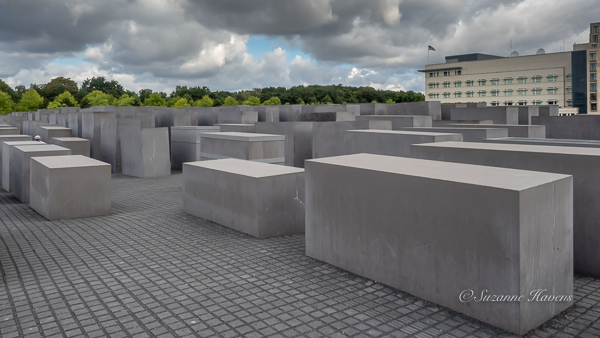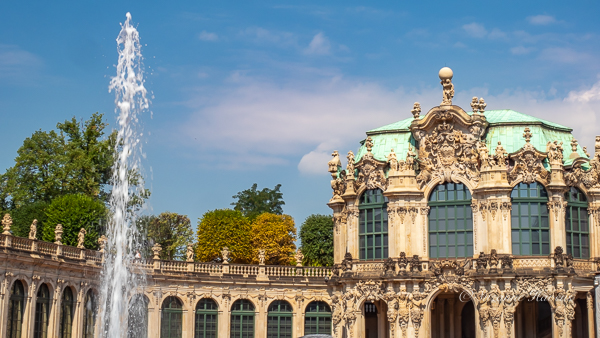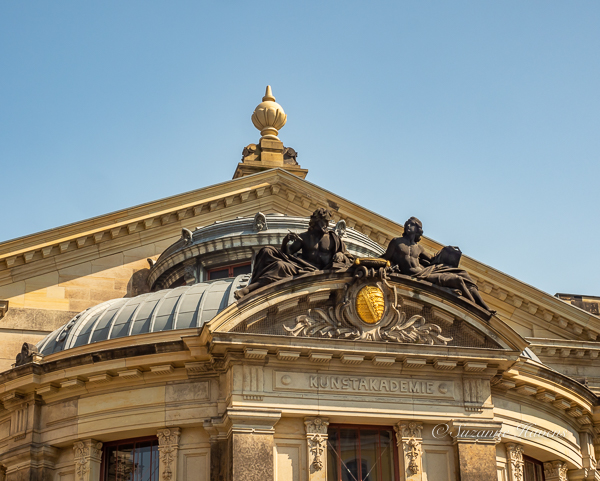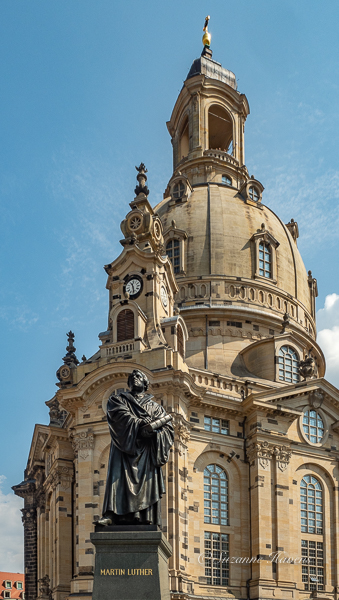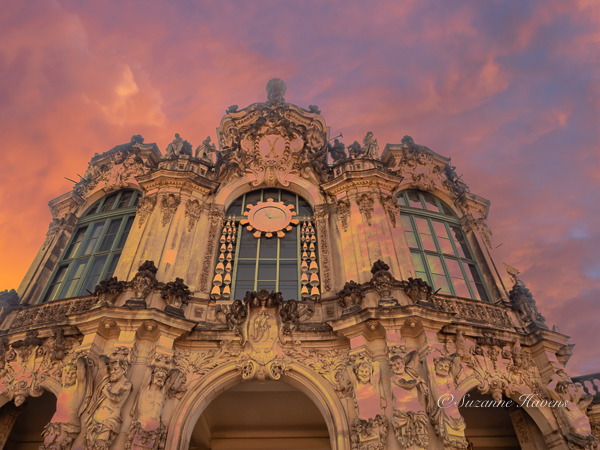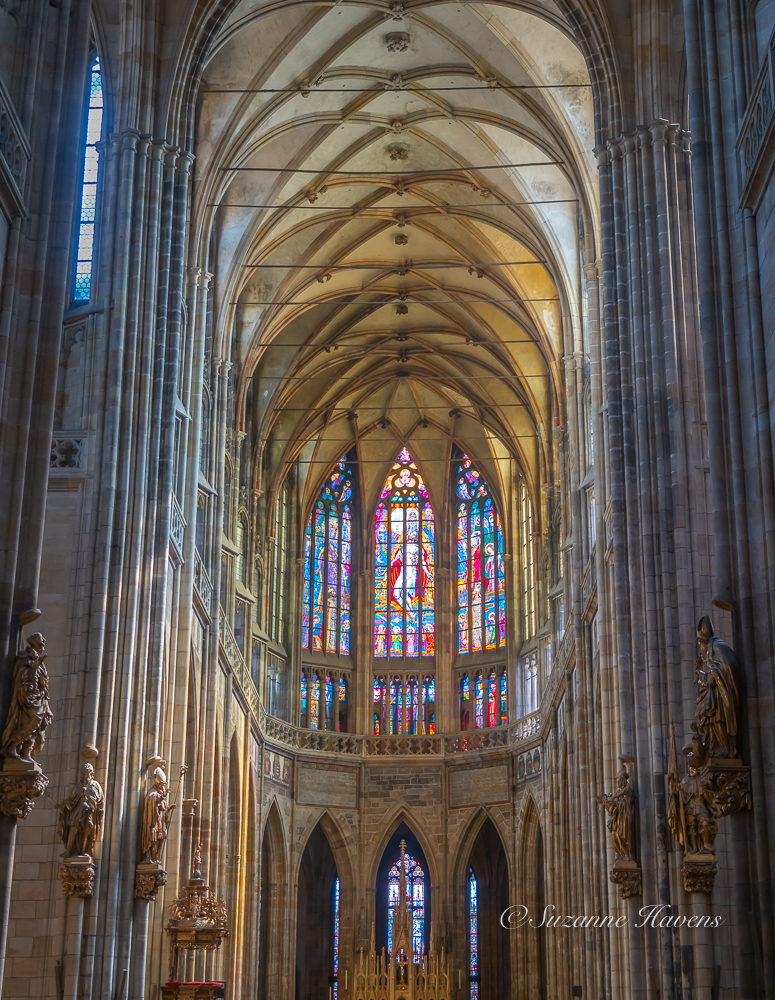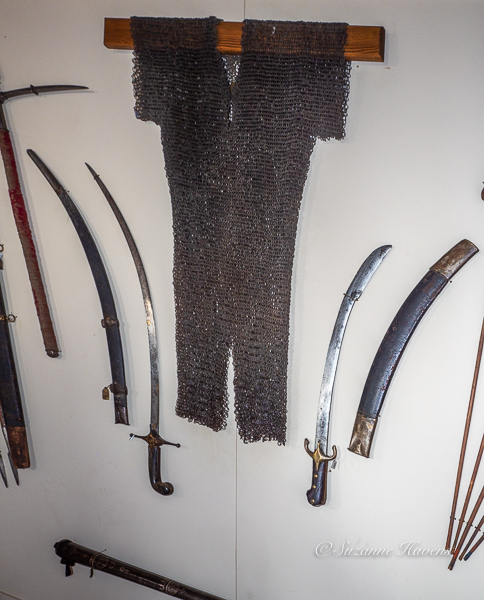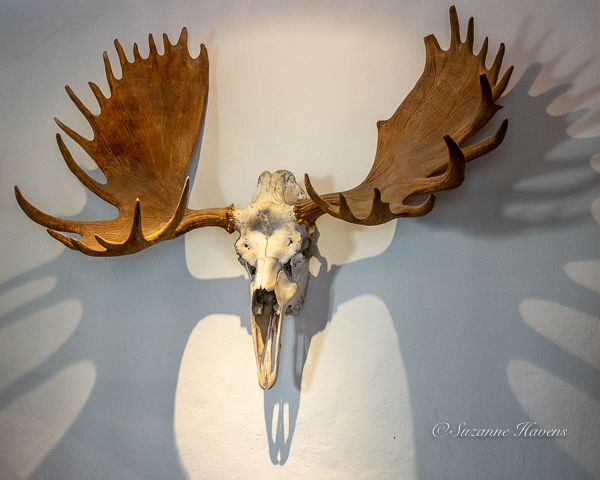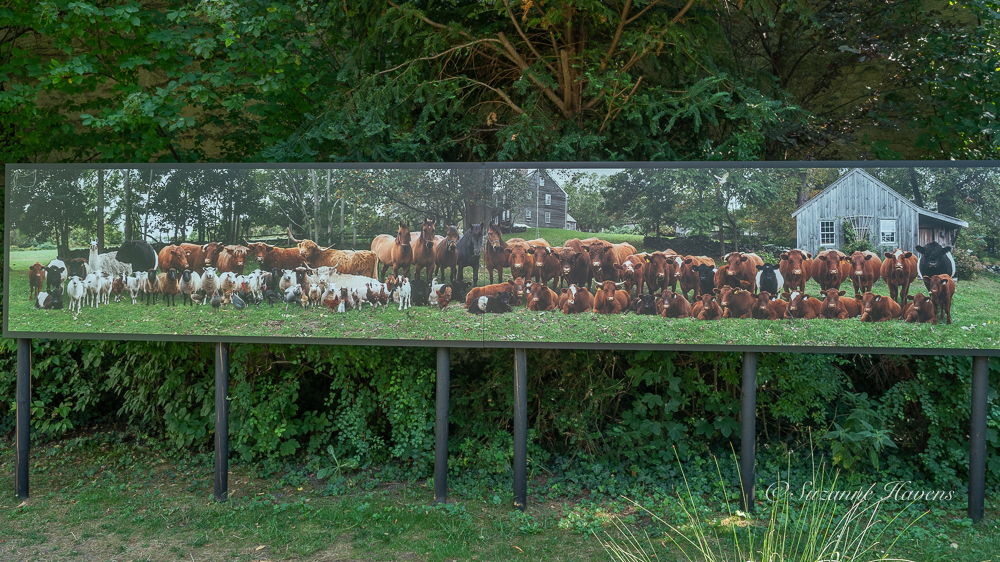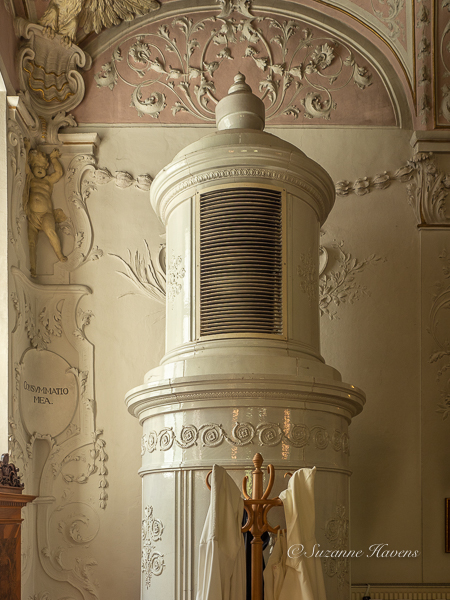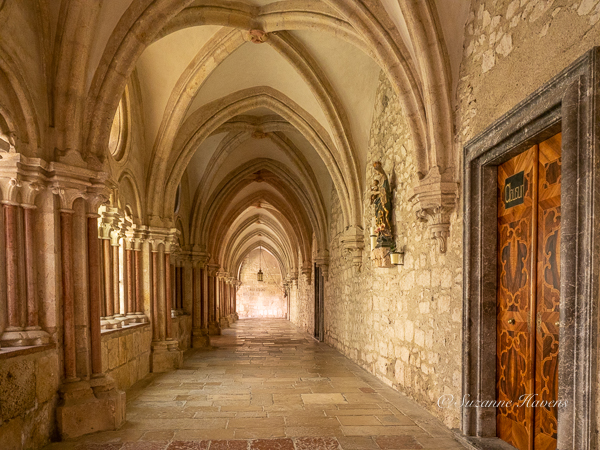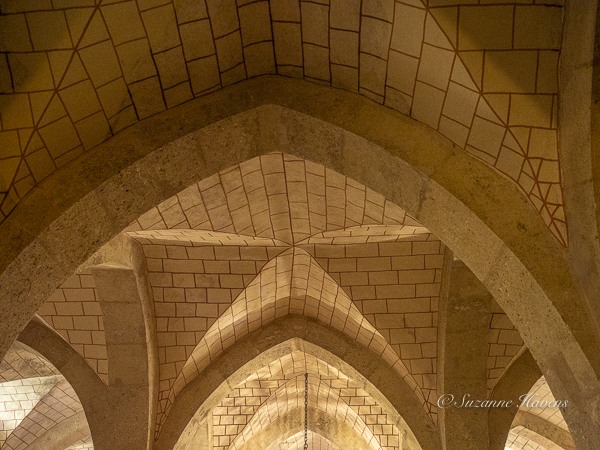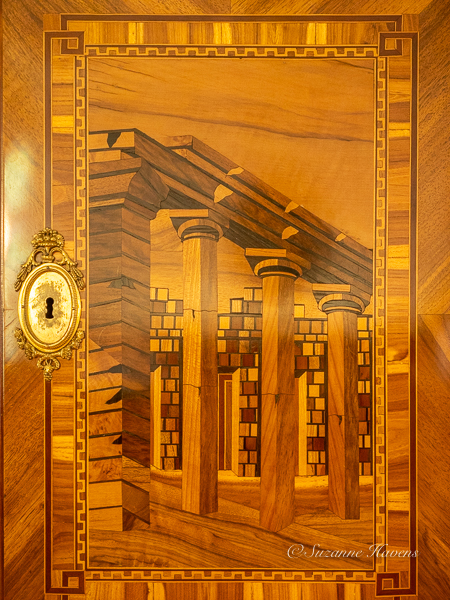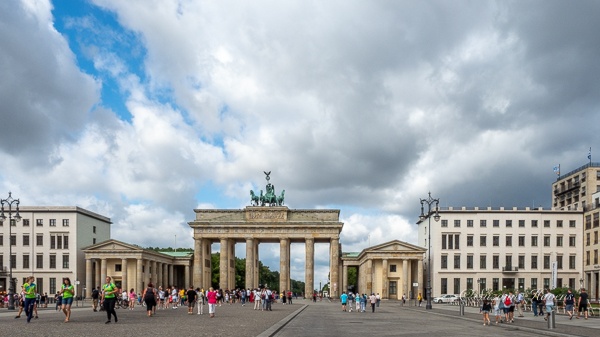
18th c. Prussian Neo-classical gate at the western end of Unter den Linden was in the Soviet sector and now symbolizes the reunification of Germany

The Brandenburg Gate quadriga was taken to Paris when the French occupied Berlin. The quadriga was returned to Berlin after Napaleon’s defeat at Waterloo. The quadriga was destroyed in WWII and recast from the original molds. The iron cross and eagle, symbols of Prussia, were removed by the Communist regime but they were added again after reunification.

Under a linden tree on its eponymous street

The Hotel Adlon, located next to the Brandenburg Gate on Under den Linden, was center of hospitality to the rich and famous and rebuilt as the 5-star Hotel Adlon Kampinski

The elephant, lion’s head and frog with lotus fountain was part of the original Adlon, “a present from the Maharaja of Patiala around 1930” per the Kampinski website and inspiration for the 6 million Euro remodeling

In spite of shorts, tee shirt, ball cap and athletic shoes, we were not asked to leave

Floral display in the lobby comprised of many vases instead of just one

The Adlon Kampinski skylight features eagles, gryphons and six-pointed stars
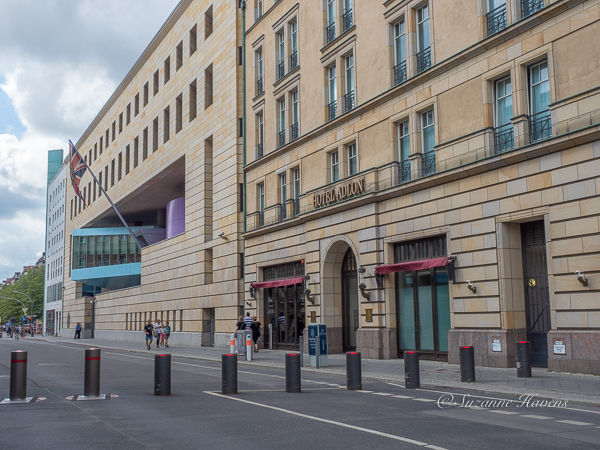
The hotel is adjacent to the British Embassy









